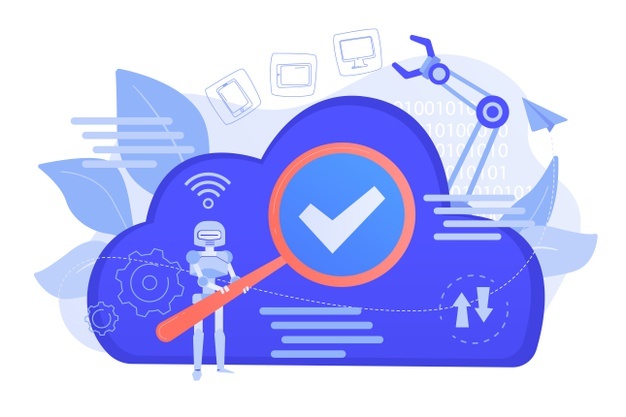Human Behavior & Human Data: Beyond Big Data
3AI May 13, 2021

In recent years, there has been a lot of hype around “big” data in the marketing world. Big data is extremely helpful with gathering quantitative information about new trends, behaviors and preferences, so it’s no wonder companies invest a lot of time and money sifting through and analyzing massive sets of data. However, what big data fails to do is explain why we do what we do.
“Thick” data fills the gap. Thick data is qualitative information that provides insights into the everyday emotional lives of consumers. It goes beyond big data to explain why consumers have certain preferences, the reasons they behave the way they do, why certain trends stick and so on. Companies gather this data by conducting primary and secondary research in the form of surveys, focus groups, interviews, questionnaires, videos and other various methods. Ultimately, to understand people’s actions and what drives them to your business (or not), you need to understand the humanistic context in which they pursue these actions.
Human Behavior vs Human Data
It’s crucial for successful companies to analyze the emotional way in which people use their products or services to develop a better understanding of their customers. By using thick data, companies can develop a positive relationship with their customers and it becomes easier for those companies to maintain happy customers and attract new ones.
Take for example Lego, a successful company that was near collapse in the early 2000’s because they lost touch with their customers. After failed attempts to reposition the company with action figures and other concepts, Jørgen Vig Knudstorp, CEO of the Danish Lego firm, decided to engage in a major qualitative research project. Children in five major global cities were studied to help Lego better understand the emotional needs of children in relation to legos. After evaluating hours of video recordings of children playing with legos, a pattern emerged. Children were passionate about the “play experience” and the process of playing. Rather than the instant gratification of toys like action figures, children valued the experience of imagining and creating. The results were clear; Lego needed to go back to marketing its traditional building blocks and focus less on action figures and toys. Today, Lego is once again a successful company, and thick data proved to be its savior.
While it’s impossible to read the minds of customers, thick data allows us to be closer than ever to predicting the quirks of human behavior. The problem with big data is that companies can get too caught up in numbers and charts and forget the humanistic reality of their customers’ lives. By outsourcing our thinking to Big Data, our ability to make sense of the world by careful observation begins to wither, just as you miss the feel and texture of a new city by navigating it only with the help of a GPS.
The Perils of Big Data Exceptionalism
As the concept of “Big Data” has become mainstream, many practitioners and experts have cautioned organizations to adopt Big Data in a balanced way. Many qualitative researchers from Genevieve Bell to Kate Crawford and danah boyd have written essays on the limitations of Big Data from the perspective of Big Data as a person, algorithmic illusion, data fundamentalism, and privacy concerns respectively. Journalists have also added to the conversation. Inside organizations Big Data can be dangerous. People are getting caught up on the quantity side of the equation rather than the quality of the business insights that analytics can unearth. More numbers do not necessarily produce more insights.
Another problem is that Big Data tends to place a huge value on quantitative results, while devaluing the importance of qualitative results. This leads to the dangerous idea that statistically normalized and standardized data is more useful and objective than qualitative data, reinforcing the notion that qualitative data is small data.
These two problems, in combination, reinforce and empower decades of corporate management decision-making based on quantitative data alone. Corporate management consultants have long been working with quantitative data to create more efficient and profitable companies.
Without a counterbalance the risk in a Big Data world is that organizations and individuals start making decisions and optimizing performance for metrics — metrics that are derived from algorithms. And in this whole optimization process, people, stories, actual experiences, are all but forgotten. By taking human decision-making out of the equation, we’re slowly stripping away deliberation — moments where we reflect on the morality of our actions.
Where does Thick Data come from ?
Harvard Business Review (HBR) defines thick data as a tool for developing ‘hypotheses’ about ‘why people behave’ in certain ways. While big data can indicate trends in behavior that allow marketers to form hypotheses, thick data can fill in the gaps and allow marketers to understand why their customers are likely to take certain actions.
While ‘thick data’ is recently receiving a great deal of attention among big data thought leaders, it’s not a new concept. There’s little difference between ‘thick’ data and ‘prescriptive analytics,’ both of which represent advanced maturity in marketing big data. By shifting your focus from predictive big data to forming and testing hypotheses, marketers can better understand how their buyers will act in the future.
Historically, big data has been transactional, while thick data has been qualitative. For data-driven brands of years past, insights into consumer behavior were typically derived from behavioral observation, voice of the customer (VOC) or Net Promoter Score (NPS) surveying, focus groups, or other time-intensive research methods.
Today, insights into consumer behavior can come from a variety of sources. Thanks to social media, internet of things technologies and other drivers of big data, marketers can gain insight into why humans act the way they do with data sources such as:
- Online or Mobile Behavior
- User-generated social media content
- 3rd-party transactional data
Studies indicate that currently, 95% of brand research into consumer preferences is performed manually, using methods such as surveying or focus groups. However, in an era where consumers produce thousands of insights each day from mobile usage, online shopping and social media updates, the insights are easy to obtain.
Finally, will Thick Data take over Big Data ?
This is not to say big data is useless. It is a powerful and helpful tool company should invest in. However, companies should also invest in gathering and analyzing thick data to uncover the deeper, more human meaning of big data. Together, thick data and big data give you an incredibly insightful advantage.





